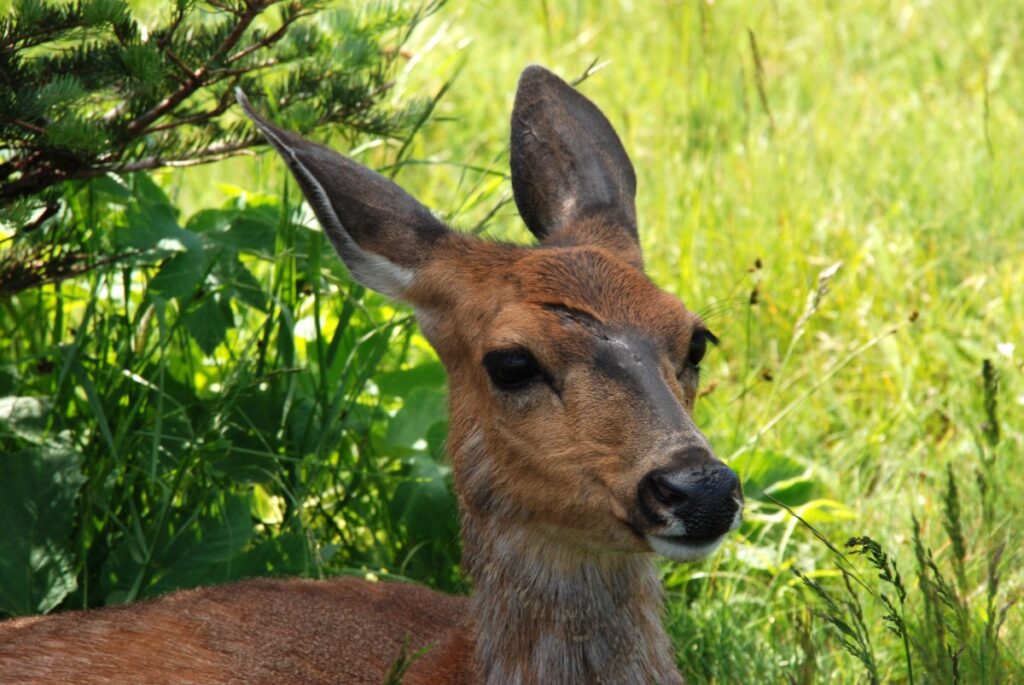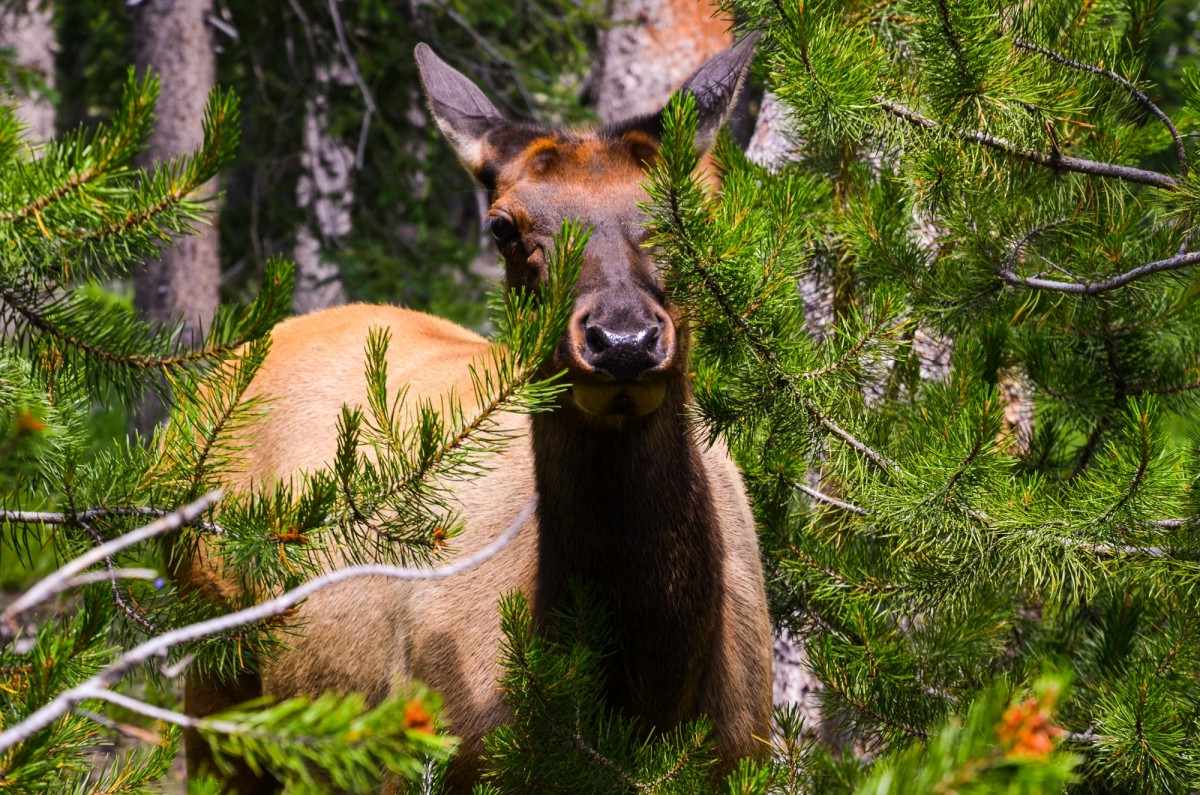American Wildlife: A Tapestry of Biodiversity and Conservation Efforts – The diverse landscapes of North America are home to a rich tapestry of wildlife, from the iconic bald eagle soaring in the skies to the majestic grizzly bear roaming the wilderness. In this article, we’ll delve into the intricacies of American wildlife, exploring its biodiversity, the challenges it faces, and the tireless efforts dedicated to its conservation.
American Wildlife: A Tapestry of Biodiversity and Conservation Efforts / American Wildlife: A Tapestry of Biodiversity and Conservation Efforts

Introduction
A. Brief overview of American wildlife
From the towering redwoods of California to the vast prairies of the Midwest, American wildlife is as diverse as the landscapes it inhabits. This diversity is not only a testament to the continent’s ecological richness but also a source of pride for its inhabitants.
B. Significance of exploring American wildlife
Understanding and appreciating the flora and fauna unique to North America is crucial for fostering a sense of environmental responsibility. As we uncover the wonders of American wildlife, we gain insight into the delicate balance of nature and the interconnectedness of all living organisms.
Biodiversity in North America
A. Diverse ecosystems
North America boasts a myriad of ecosystems, ranging from dense forests to arid deserts. Each region harbors its own set of unique species, adapted to thrive in specific environmental conditions.
B. Unique species
The biodiversity in North America is exemplified by its unique inhabitants, such as the elusive mountain lion, the agile pronghorn, and the enigmatic sea otter. Exploring these species offers a glimpse into the intricate web of life that sustains the continent.
Threats to American Wildlife
A. Habitat loss
As urbanization and industrialization continue to expand, the natural habitats of many American species face unprecedented challenges. The encroachment of human activities leads to habitat fragmentation, affecting the survival of numerous wildlife populations.
B. Climate change
The impact of climate change is increasingly evident, affecting the distribution and behavior of wildlife. Shifts in temperature and precipitation patterns pose challenges for species already facing habitat loss, exacerbating their vulnerability.
C. Pollution
Pollution, whether from industrial runoff, plastic waste, or chemical contaminants, poses a significant threat to American wildlife. From freshwater ecosystems to coastal areas, the detrimental effects of pollution ripple through the entire food chain.
Conservation Efforts
A. National parks and reserves
The establishment of national parks and wildlife reserves plays a pivotal role in preserving crucial habitats. These protected areas serve as sanctuaries for a multitude of species and provide a platform for scientific research and public education.
B. Conservation organizations
Numerous organizations are dedicated to wildlife conservation, working tirelessly to address issues such as habitat protection, anti-poaching efforts, and community engagement. Collaborative initiatives involve both governmental and non-governmental entities, emphasizing the collective responsibility for preserving biodiversity.
C. Research initiatives
Ongoing research is essential for understanding the needs of different species and formulating effective conservation strategies. Scientific advancements, including GPS tracking and genetic studies, contribute valuable data that informs conservation practices.
Iconic American Wildlife Species
A. Bald eagle
As a symbol of freedom and strength, the bald eagle holds a special place in American culture. Conservation efforts, including the banning of DDT and habitat protection, have led to the recovery of bald eagle populations.
B. Grizzly bear
The grizzly bear, once facing a perilous decline, is now the focus of extensive conservation programs. Habitat preservation and efforts to minimize human-bear conflicts contribute to the recovery of this iconic species.
C. American bison
The American bison, a symbol of resilience, faced near-extinction in the past. Conservation programs have successfully increased bison numbers, highlighting the positive impact of targeted efforts.
D. Gray wolf
The reintroduction of gray wolves to certain areas has sparked debates, yet it showcases the complex interplay between predator and prey in maintaining ecological balance.
Wildlife Watching Opportunities
A. Popular wildlife watching destinations
From the awe-inspiring Yellowstone National Park to the coastal wonders of Acadia, the United States offers a plethora of opportunities for wildlife enthusiasts to observe and appreciate diverse species in their natural habitats.
B. Tips for responsible wildlife watching
Responsible wildlife watching is essential for minimizing disturbances to animals and their habitats. Adhering to established guidelines ensures that the joy of observing wildlife does not come at the expense of their well-being.
Endangered Species and Recovery Programs
A. Overview of endangered species
An overview of species classified as endangered sheds light on the urgency of conservation efforts. Understanding the specific threats faced by each species is crucial for implementing targeted recovery programs.
B. Success stories in wildlife recovery
Highlighting success stories, such as the recovery of the California condor and the black-footed ferret, underscores the impact of dedicated conservation initiatives. These achievements offer hope for the future of other endangered species.
Impact of Human Activities
A. Urbanization
The rapid expansion of urban areas often results in habitat destruction and fragmentation. Striking a balance between development and conservation is essential to mitigate the impact of urbanization on wildlife.
B. Recreational activities
Recreational activities, including hiking, camping, and off-road driving, can have unintended consequences on wildlife. Promoting responsible outdoor practices ensures that human recreation harmonizes with wildlife conservation.
C. Sustainable practices
Adopting sustainable practices in agriculture, forestry, and fisheries is pivotal for minimizing the ecological footprint of human activities. Balancing human needs with the preservation of natural habitats is an ongoing challenge.
The Role of Wildlife in American Culture
A. Native American connections
For Native American communities, wildlife holds cultural and spiritual significance. Exploring the deep connections between indigenous people and the land provides a holistic understanding of the importance of coexistence.
B. Symbolism in American literature and art
American literature and art often draw inspiration from the beauty and symbolism of wildlife. Examining how animals are portrayed in cultural expressions enhances our appreciation for the role they play in shaping the national identity.
Wildlife Conservation Challenges
A. Legal and policy challenges
Navigating legal frameworks and policies related to wildlife conservation can be complex. Addressing regulatory challenges is essential for fostering an environment conducive to effective conservation efforts.
B. International cooperation
Many species migrate across borders, emphasizing the need for international collaboration in conservation initiatives. Sharing knowledge, resources, and strategies ensures a unified approach to safeguarding wildlife on a global scale.
The Future of American Wildlife
A. Ongoing research and innovations
Continued research and innovative technologies are pivotal for adapting conservation strategies to evolving challenges. Embracing advancements in fields such as genetics and remote sensing enhances our ability to protect and preserve American wildlife.
B. The importance of public awareness
Building public awareness and fostering a sense of responsibility are critical for the success of conservation efforts. Engaging the public through education and outreach programs ensures a collective commitment to preserving the nation’s natural heritage.
Engaging the Public
A. Educational programs
Educational initiatives, ranging from school programs to public awareness campaigns, play a crucial role in shaping environmentally conscious citizens. Instilling a love for nature from an early age creates a foundation for lifelong stewardship.
B. Community involvement
Local communities can actively contribute to wildlife conservation by participating in community-based projects. Involving residents in decision-making processes fosters a sense of ownership and responsibility for the protection of local ecosystems.
Balance Between Development and Conservation
A. Sustainable development practices
Striking a balance between development and conservation requires adopting sustainable practices. Implementing eco-friendly technologies and incorporating conservation considerations into urban planning contribute to a harmonious coexistence.
B. Finding a middle ground
The challenge lies in finding a middle ground where economic development meets ecological responsibility. Collaborative efforts between industries, policymakers, and conservationists are essential for achieving a sustainable future.
Wildlife Photography and Social Media
A. Influence on conservation awareness
Wildlife photography, amplified through social media, has the power to raise awareness on conservation issues. Stunning visuals captivate audiences, inspiring a deeper connection to nature and a sense of responsibility towards its preservation.
B. Ethical considerations
Responsible wildlife photography involves ethical practices to minimize disturbance to animals. Photographers and viewers alike play a role in ensuring that the pursuit of captivating images does not compromise the welfare of the subjects.
Conclusion
A. Recap of the importance of preserving American wildlife
In conclusion, the preservation of American wildlife is not just an ecological imperative but a cultural and moral responsibility. As we navigate the challenges and successes in conservation, it becomes evident that our actions today shape the legacy we leave for future generations.
B. Encouragement for active participation in conservation efforts
Every individual has a role to play in the conservation of American wildlife. Whether through supporting local initiatives, adopting sustainable practices, or simply spreading awareness, collective efforts are vital for safeguarding the biodiversity that makes North America unique.
5 Unique FAQs About American Wildlife
- Q: What are the main threats to American wildlife?
- A: American wildlife faces threats such as habitat loss, climate change, and pollution, which impact various species and ecosystems.
- Q: How can individuals contribute to wildlife conservation?
- A: Individuals can contribute by supporting conservation organizations, practicing responsible outdoor activities, and promoting awareness within their communities.
- Q: Why are national parks crucial for American wildlife?
- A: National parks provide protected habitats, facilitate scientific research, and offer opportunities for responsible wildlife watching, contributing significantly to wildlife conservation.
- Q: How does climate change affect American wildlife?
- A: Climate change affects the distribution and behavior of wildlife, leading to shifts in habitats, migration patterns, and the availability of resources.
- Q: What is the significance of wildlife photography in conservation?
- A: Wildlife photography, especially shared through social media, plays a crucial role in raising awareness about conservation issues, fostering a connection between people and nature.




